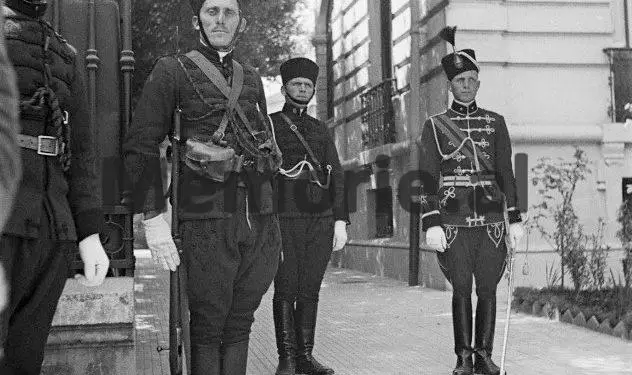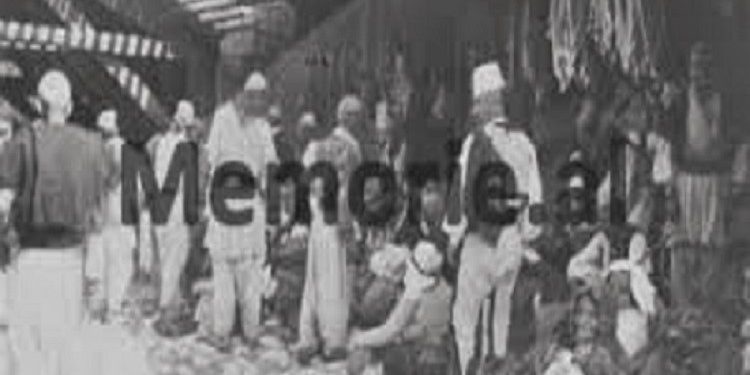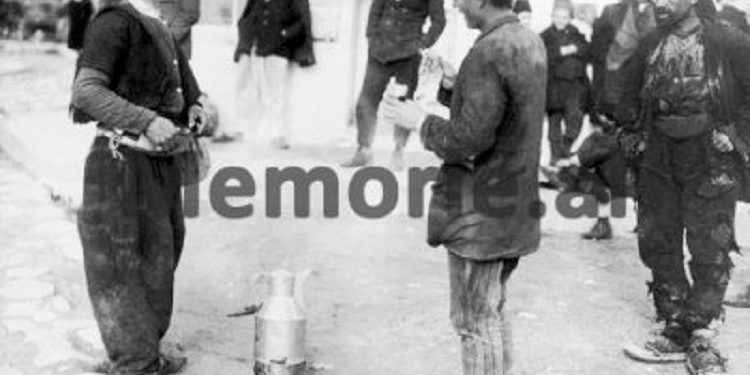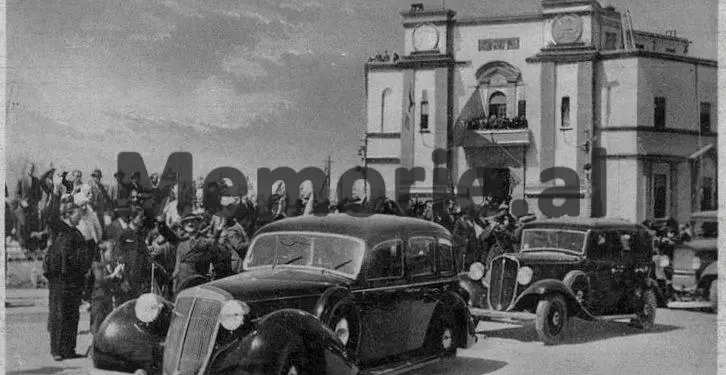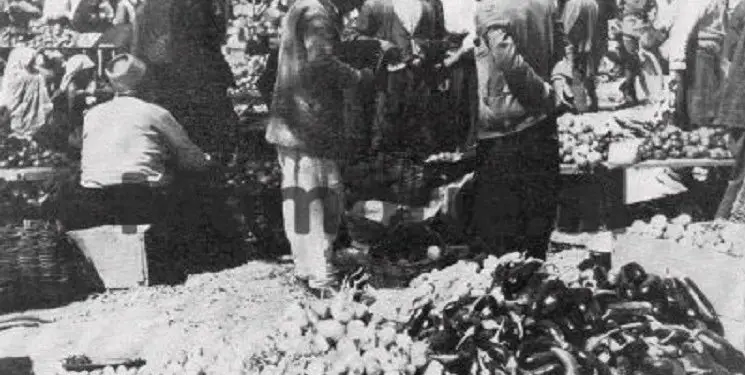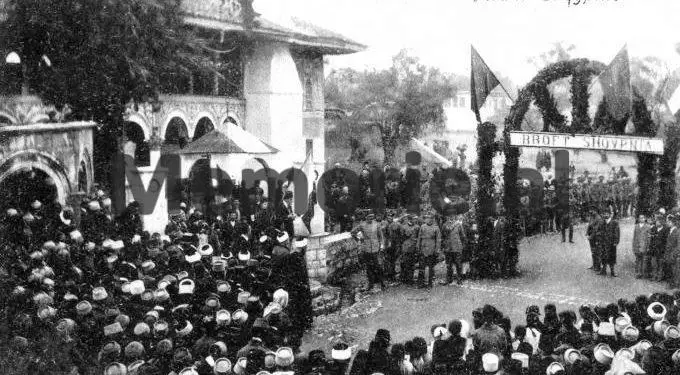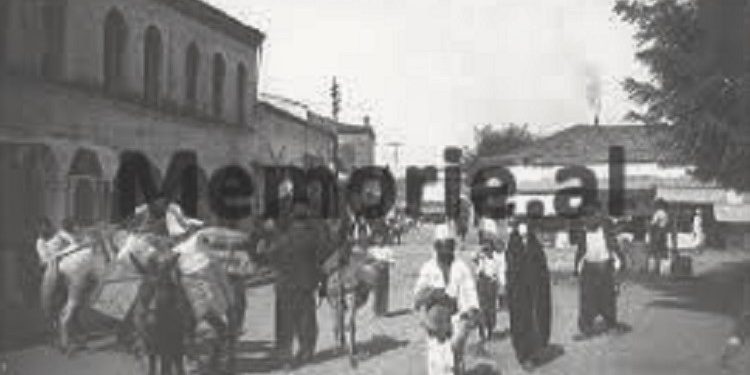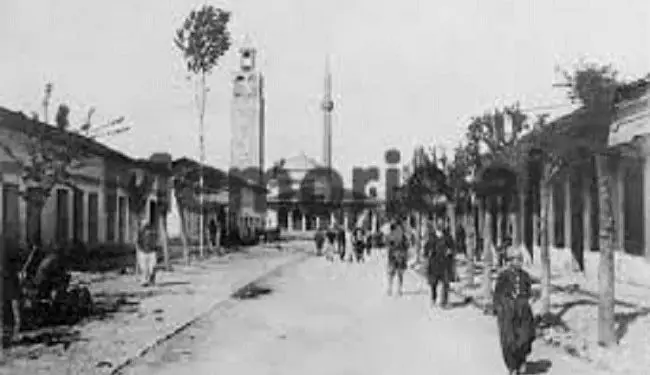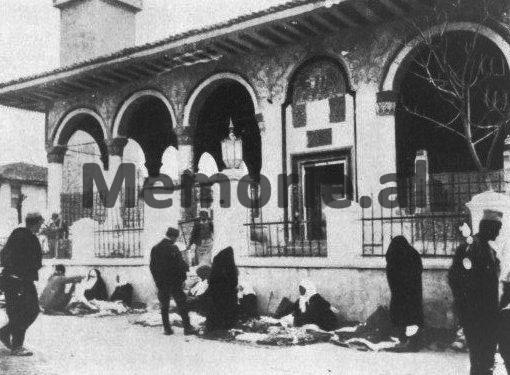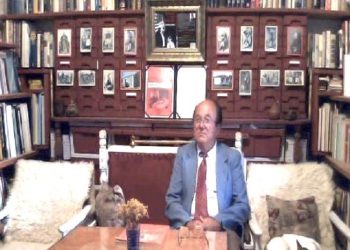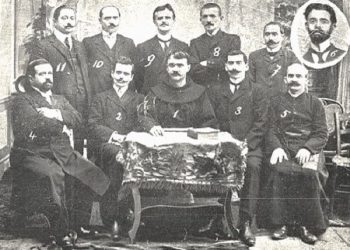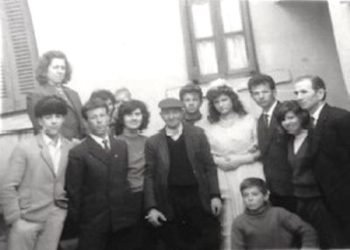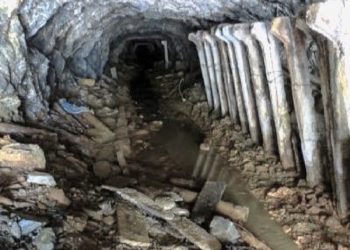By Sven Aurén
Translated by Adil N. Bicaku
Part eight
ORIENTI EUROPE
Land of Albania! Let me bend my eyes
On thee, thou rugged nurse of savage men.
Lord Byron.
In the book “Orient of Europe”, the author of the work is the Swede Sven Aurén. They are impressions of traveling from Albania from the ‘30s. His direct experiences without any retouching.
In a word, the translation of the book will bring to the Albanian reader, the original value of knowing that story that we have not known and we continue to know it, and now distorted by the interests of the moment.
Now a little about what these lines address to you: My name is Adil Bicaku. I have worked and lived for over 50 years in Sweden, without detaching for a moment, the thought and feeling from our Albania.
I am now retired and living with my wife and children, here in Stockholm. Having been for a long time, from the evolution of the Albanian language, which naturally happened during these decades, I am aware of the difficulties, not small, that I will face, to give the Albanian reader, the experiences of the original.
Therefore, I would be very grateful if we could find a practical way of cooperation together, to translate this book with multifaceted values.
Morally, I would feel very relieved, paying off part of the debt that all of us Albanians owe to our Albania, especially in these times that continue to be so turbulent.
With much respect
Adil Biçaku
Continued from the previous issue
When we entered Tirana and from the periphery towards the center, we did not want to believe that this was a community inhabited by 31,000 people. The low, primitive houses, which look more like huts than houses, give the whole aspect of a negligible hamlet. No asphalt or cobblestone was seen. But soon enough the village took on the character of a town. We walk down a wide, paved road with sidewalks, shops and a row of magnificent street lights. We passed a square, around the district with large buildings, of the administration and to the right we saw the new palace of the ministry, which are very effective and grouped, around a square and projected to form the skeleton of the plan, elaborated of the city, which will be realized as soon as Allah and the income make it possible. We saw two boulevards with new trees, in a row and they explained to us that one is named Boulevard “Zog” and the other Boulevard “Mussolini”. This is symbolic, that the two main streets of Tirana are called “Zogu” and “Mussolin”. Which of the boulevards will be unbaptized first?
We were also surprised by the intense life on the streets. In this respect, Tirana is larger than Stockholm. The city center is crowded with people, from the inhabitants of Tirana or villagers dressed in picturesque clothes, which have come down from the mountains and walk back and forth, shopping, or in the manner of southern Europeans, lie down and sleep on the edge of the walls houses. Colorful and stylish clothes, give the look of the completely oriental aspect. Numerous cafes, filled to the brim and outside the shops, re-sit down and smoke long, beautiful pipes, which at the end, have a horizontal plate, where the cigarette stands straight up or down, in a strange way. But the impression of the orient is also given by the noise. Cars come around with headlights without stopping. From the center of the small square, a very large atopalant crawls, which an agile trader has installed on the roof of his tobacco cocoon.
In one corner sits an old gentleman, with rare foreheads gathered in an oriental way, with his feet under his body and sitting without stopping just because, he has nothing else to do. Outside the colossal red building of the prefecture, a whole group of Albanian farmers are sitting. The men lie on the sidewalk on the sidewalk and put the key on their face, to protect themselves from the strong sun. The women squat, at the base of the wall, and talk non-stop, behind white or black leaves. A man in uniform goes out on the prefecture stairs and puts his foot on the abdomen of two men: with a careful sign that they should come inside, for a brief conversation with the lady, Justice. In the prefecture are also the court and the group on the street are the plaintiffs and the defendants, waiting to be summoned for their trial.
Next to the people are taxis and donkeys, which characterize the appearance of the city. I do not mention cars on purpose. They are actually located, lined up in large columns, in the square, but the drivers stand sideways, with gloomy but restrained views. The situation is this, that a few years ago when Tirana started living as the capital, drivers did excellent trade and the capital’s taximeter park, of course without taximeters, when the price was always agreed, increased every day. But gasoline became more expensive, and then a sane Albanian, it occurred to him to bring some used Italian horse-drawn carriages, with which he could keep prices down.
The import of these carts got a big increase and the inhabitants of Tirana, who do not like to walk, but who do not even have any abundance of the good of this world and especially for this, have switched to this new vehicle of transport. The strollers have a compelling, light four-wheeled, semi-convertible or all-wheel-drive appearance, from time immemorial, large as home, things between the wheels, and with a high stool-like body chair. What does it matter, that during many years of Italian service, they have more insects than hairs on their seats?
The man sits softly and comfortably and looks at himself as I saw him, when shaken by the poor horses. Drivers with their cars, which with many economic sacrifices have bought them, see their existence threatened and their number decreases. In addition to that, the carriage traffic of Tirana, gives you reason to think a little. Is there any other state on earth that started to apply air transportation, continued with automobiles and ends with horse-drawn carriages? This is what Albania has done. He who considers this opposite development, as symbolic for the state in general, becomes guilty of a great mistake. This counter-development is by no means typical. Horse-drawn carriage means only an adaptation, natural according to the situation that reigns, constitutes simply the state of crisis of the time, call it so you wanted.
The coachman is a quiet man, but who has only this mistake, that he uses the whip too diligently. He never asks for payment after the end of the trip and the price standard is in ALL, i.e. 25 cents. It would never occur to him to ask for more money from a passenger. If such a thing goes to the ears of the authorities, then he is put in jail, before evening. Otherwise he looks like a king on his throne, where he sits at great heights, on his high camel. He looks quite proud, for the reason that he feels he has an advantage, over drivers. What’s more, when he noticed this triumph, he put a car horn in the wheelchair, which he uses when he should and when he should not. It makes a big impression when you suddenly jump up, from the screaming scream of the car horn and see a giant cart, which shakes slowly, leading your mind to the club of Dickens and Pickwick.
Behind the cart is the donkey, the most important means of transport in Tirana. It is also used as a cargo animal to cross horses and on the way you encounter long caravans of donkeys, loaded with wood or large baskets of fruit. When the highlanders come down for the Thursday bazaar, it is the donkeys that enable the transportation of the goods to the market. If the farmer is somewhat in good condition, then he has several donkeys and uses one of them as a horse to ride. For him, I mean. His wife, according to the oriental tradition of many millennia, is enough to follow him on foot.
Everywhere you look these proud gentlemen, rocking on a donkey, give the impression of a philosophical calm. It happens that the rider suddenly has the desire to increase the speed and whistles the stick, to crackle like an automatic on the animal’s claws. This causes no effect other than a large fog of smoke, covering both the animal and the owner. When the fog disperses, the crew shakes forward exactly at the same tact as before. Why the rider in the donkey, makes the effort that causes that smoke, by hitting with a stick, is one of the many unsolved enigmas of Tirana. Maybe it’s just an impulsive and sudden desire for activity, which erupts in this way.
The square outside the prefecture constitutes the real center of the city and thanks to the great invasion of street vendors, has become a crossroads, between an amusement park and a shopping square. Beneath the beautiful movie posters, from which Greta Garbo, looking down with regret at the idle car park, have erected a row of cafeteria corners, where Albanians, with the pleasure of carpets, rush over the delicious things on offer. Seeing an Italian lick in an ice cream cone is an interesting sight of intense desire pleasure.
To see an Albanian eat baklava, a kind of Turkish honey, is unpaid. He is no longer in this world. The happy look on his face lets you know that he is far from here, in some wonderful paradise. A kind of fatty paste, called Kadaifi, cakes called Halva, or Kos even these, constitute pleasures, which give Albanians, connection to paradise. I for reasons of experience, have tried Yogurt, thick fermented milk, but I hardly had any perception of paradise. Between us: my associations were linked in reverse.
Around this center, Tirana expands into a very large circle. In the middle of the district, the streets are relatively wide and the houses relatively European. Numerous elements of the character of the city, testify to the new constructions of the administration. In this part there are also two mosques, in one of them there are beautiful paintings on the walls, probably very old. There rests Sulejman Pasha, in the fragile wooden coffin, covered with various pieces of cloth. Next to him rests Ceno Kryeziu, King Zog’s brother-in-law, who was killed by a political opponent, on a street in Prague, where he served as the powerful minister of Albania.
Nearby, there is something else, reminiscent of the great efforts of the birth of the new Albanian state. At a road junction, stands a bronze bust on a pedestal. It’s the shape of a man’s face, with a manly character and some shoulder straps, indicating it’s the bust of an officer. It is Major Topallai, who was killed in Vienna. But the bullet, which took the life of the major, was aimed at another person, King Zog himself. The king paid a quick visit in February 1931, to the Austrian capital, where he also saw, among other things, the “Palacio”, which was given with an interesting new interpretation, in that famous opera. The royal visitor of the theater, from the adventurous romantic state, aroused really great interest and after the end of the show, the streets around the theater, were full of people. People had waited for many hours to see how little His Majesty, Albanian. The commotion became bigger than previously thought.
The doors open and King Zog comes out. At the head of the five gentlemen in tailcoats, he walked with quick steps, towards a private car, which was waiting for him and took a seat with two of his companions, whiles the other companions quite modestly, got into an ordinary taxi.
Then it happened.
Two men with pistols in their hands, splitting through the crowd at speed, approached the royal car and opened rapid fire, against the gentlemen sitting inside. He sat to the right of the adjutant King, Major Topallai, fell immediately dead, and one of those two gentlemen, who quickly got out of the other car and with many shots fired, responded to the fire of the assassins, almost immediately collapsing in the street. It all happened so fast that spectators barely manage to understand what happened. Finally, the crowd recovered, the Albanian emigrants were apprehended, the police came and the ambulance came to the place, to pick up the two victims of the assassination: the dead Major Topallai and the severely wounded, the brilliant Libohova. The king himself, by a miracle, escaped unharmed.
Since then King Zog has not been to Vienna and will not be going there recently. Twice, as far as is officially known, but there may be more, he has experienced dangerous assassinations. Twice he heard the whistle of the revolver bullets, around him and both times, he escaped. He seems to have been born with that luck, which is the hallmark of most successful people leaders. But the assassinations will say a lot about the difficulties he has to face, that an independent state is not created in a few years, but it takes a long period of calm and comfort to be safely consolidated. Albania has not gained this peace, but the goal does not seem unattainable. Unless Italy has decided otherwise.
The risk of assassination gives Tirana a special feature of course and especially the night of Tirana, is characterized by great care. Here they have set up cement guard posts, in which there are guards all the time. Walking on a dark evening in the strange, winding streets near the King’s residence, well-armed soldiers stand, in every corner. Officers speed both forward and backward, for rigorous inspections. In some buildings, you cannot approach without special permission. For example, in the case of the Ministry of War, it is surrounded by a wide sidewalk and is a restricted area.
I often took small walks in the evening, to enjoy the wonderful fresh air, which is the most satisfying quality of Tirana and the short natural way home, passed over this sidewalk. Once I tried to get through there, I never tried again. With a bayonet rifle, with a threat he came forward in a second, the post-guard with a standstill and a shout ‘stop’, which without exaggeration should have been heard throughout the city. It seemed to me as if he could have woken up the whole of Albania. It was startling, screaming, that made a terribly extraordinary, frightening impression, and before the screaming was over, I was gone from the sidewalk.
***
A piece further on the tombs of Suleiman and Ceno, extends a colossal high concrete wall, in a straight sloping shape. Behind the concrete wall, barely a few green trees and a few palm trees can be seen, and among the trees, a high two-story house, and a house that resembles a villa, in yellow and white, with simple, straight lines. Opposite the mosque, the concrete wall has an interruption, by a large and modest gate with railings. There seems to be a paved road, which leads to the building and to a small building, right up there. On either side of the gate railings are two cement posts. At the entrance to the garden, a long-legged stork and a fat pelican walk. In some cages stood a wolf, three beautiful eagles, and a large, white-headed vulture.
Here in this old Muslim house, of the gentleman husband resides the King of Albania, alone. In a small building, near the concrete wall, resides his personal guard. It is said to be heavily equipped with machine guns and the allegations do not seem unbelievable. King Zog, knows the dangers of his profession. But is the guard so strong, as they like to say, then it is actually much hidden: to attract attention in general, such peaceful things as the maintenance of the green courtyard and the beautiful arrangement of flowers.
After the assassinations in parliament and Vienna, I even think that King Zog should have built a private fortress for himself and not this simple idyllic villa, like the one in Djursholm. This dictatorial King cannot pay much attention to the danger of life, in his position even if it depends on fatalism, which is an essential ingenuity, in the fighting character of the Albanian, or he considers himself now, confident in throne. But when I presented these two hypotheses, one of our Albanian friends, one of the most sincere, I got this answer:
-The residence looks simple, but you have to be convinced that it is very well maintained. And why do you believe, that His Majesty, so seldom goes beyond those concrete walls? The consolidation that we aim for and that we are on the right track to achieve is not yet, absolute. Not taking precautions would be foolish. And whatever opinion they may have of our Monarch, at one point they all agree: King Zog, has a brilliant head.
He, who said this, did not belong to the ardent admirers of the Albanian Majesty. He criticized Zog’s Italian policy harshly and incompatibly. Memorie.al
The next issue follows




